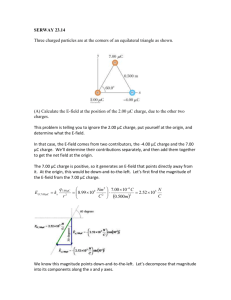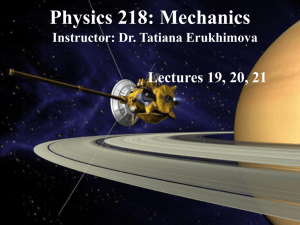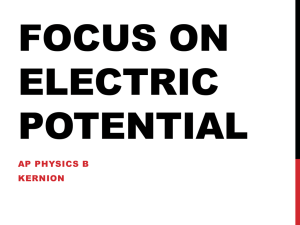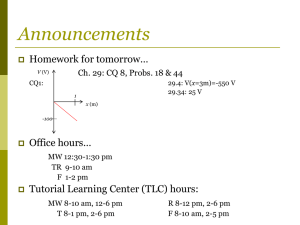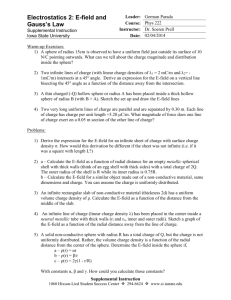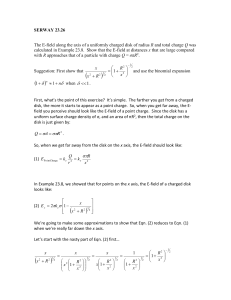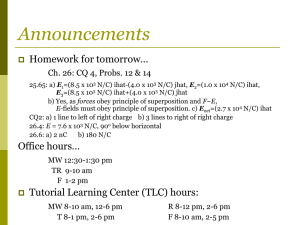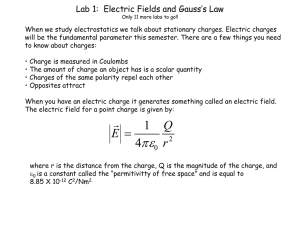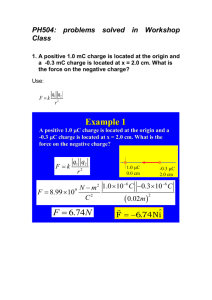chapter28.1 - Colorado Mesa University
advertisement
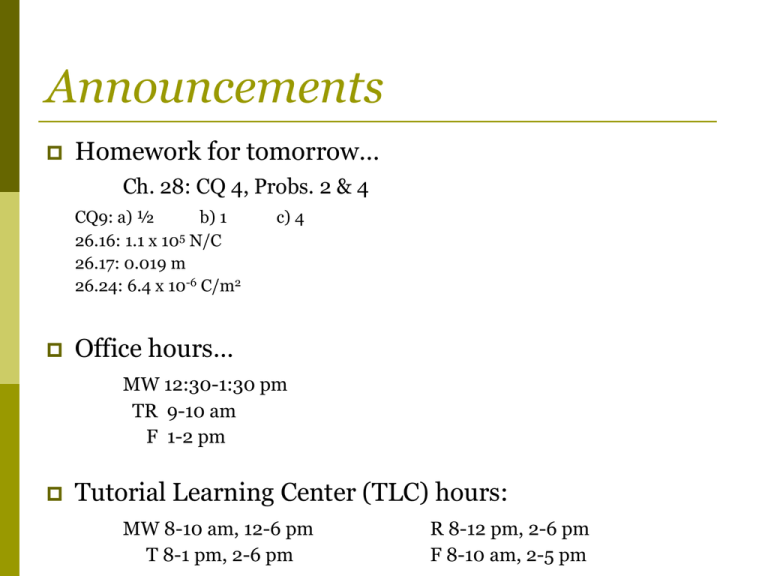
Announcements Homework for tomorrow… Ch. 28: CQ 4, Probs. 2 & 4 CQ9: a) ½ b) 1 26.16: 1.1 x 105 N/C 26.17: 0.019 m 26.24: 6.4 x 10-6 C/m2 c) 4 Office hours… MW 12:30-1:30 pm TR 9-10 am F 1-2 pm Tutorial Learning Center (TLC) hours: MW 8-10 am, 12-6 pm T 8-1 pm, 2-6 pm R 8-12 pm, 2-6 pm F 8-10 am, 2-5 pm Chapter 28 The Electric Potential (Electric Potential Energy) Last time… Conductors in electrostatic equilibrium… 1. 2. 3. E-field is ZERO at all points w/in the conductor. Any excess q resides on the exterior surface. E-field at the surface of a charged conductor.. 4. is perpendicular to the surface. is of magnitude η/ε0, where η is the surface charge density at that pt. E-field is ZERO inside any hole w/in a conductor, unless there is a q in the hole. Quiz Question 1 A +3 nC charge is in a hollow cavity inside a large chunk of metal that is electrically neutral. The total charge on the exterior surface of the metal is 1. 2. 3. 4. 0 nC. +3 nC. -3 nC. Can’t say without knowing the shape and location of the hollow cavity. Mechanical Energy Conservation In any isolated system of objects interacting only through conservative forces, the total mechanical energy E = K + U, of the system, remains the same at all times. or About Conservative Forces… The work done by a conservative force on a particle is path independent. moving around any closed path is zero. The electric force is a conservative force. Defining Potential Energy change… The change in potential energy for a conservative system is defined as the negative of the internal work the system does on itself when it undergoes a reconfiguration. Potential energy is stored work! Gravitational Potential Energy cont.. Notice: Potential energy is stored energy waiting to be ‘let loose’. Potential energy is a relative energy… The zero-reference level is arbitrary & must be chosen. Can only measure a change in PE. Work done by a Constant Force… The work done by a constant force on a particle? in terms of the dot product But what about a variable force? Work done by a Variable Force… The work done by a variable force (or a variable path) on a particle? f i For a uniform g-field… The work done on a particle of mass m falling in a g-field is… For a uniform E-field… The work done on a particle of charge q ‘falling’ in an E-field is… ++++++++++++++++++++++++++++++ + + ------------------------------------------------------- But what about a negative charge? Quiz Question 2 An e- moves from point i to point f, in the direction of a uniform E-field. During this displacement… i 1. 2. 3. 4. 5. f The work done by the field is positive and the potential energy of the electron-field system increases. The work done by the field is negative and the potential energy of the electron-field system increases. The work done by the field is positive and the potential energy of the electron-field system decreases. The work done by the field is negative and the potential energy of the electron-field system decreases. The work done by the field is positive and the potential energy of the electron-field system does not change. i.e. 28.1: Conservation of Energy A 2.0 cm x 2.0 cm parallel-plate capacitor with a 2.0 mm spacing is charged to ± 1.0 nC. 1st a proton, then an electron are released from rest at the midpoint of the capacitor. a. What is each particle’s change in electric potential energy from its release until it collides with one of the plates? b. What is each particle’s speed as it reaches the plate?

